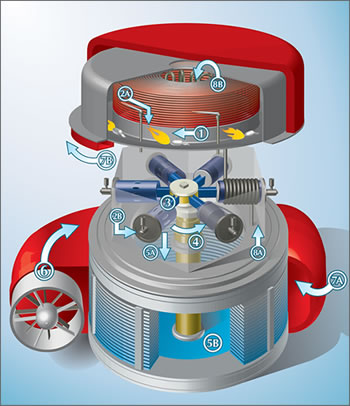The new engine of the future Cyclone in the public domain

Cyclone Power Technologies has posted open source technical documentation for the Cyclone external combustion engine. An engine capable of operating on any fuel (even a waste heat engine WHE, works on the principle of heating) used in the EATR military “eater”
(post on habrahabr.ru/blogs/robot/64741 ).
How does the Cyclone Mark V engine work?
')
The Cyclone engine (external combustion engine) operates on the Rankine Cycle principle with the improved Schoell Cycle. It produces mechanical energy from external heat, heating and then cooling water in a closed system.
- Heat
Water is heated to a temperature above 1100 degrees Celsius for 5 seconds. Then steam is supplied to the engine cylinders through the valve system. The valves regulate the portion of superheated steam entering the cylinders - the larger it is, the higher the power and torque at the outlet.
- Mechanics
- Cooling
- The process is closed.
Here are some videos:
The engine is powered by many heat sources: commercial stoves, industrial heaters, exhaust gases ...
Test steam engine brand V (works from an external source of heat with a combustion chamber).
Testing the inside of the combustion chamber
The engine runs on wood pellets and produces electricity.
Clean energy derived from the heat of exhaust gases from small industrial furnaces. WHE is an 18-hp which will work as a 10-kW electric generator.
Official source of www.cyclonepower.com
Source: https://habr.com/ru/post/82194/
All Articles